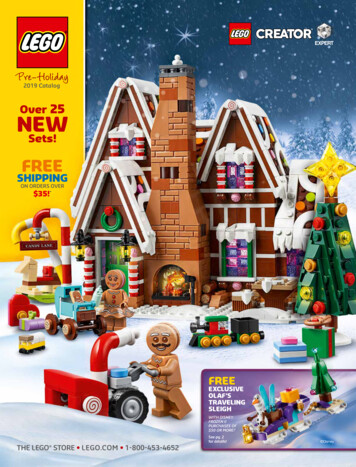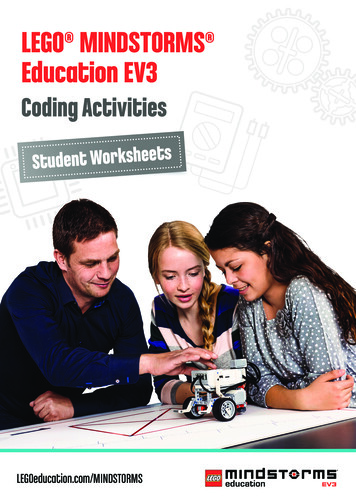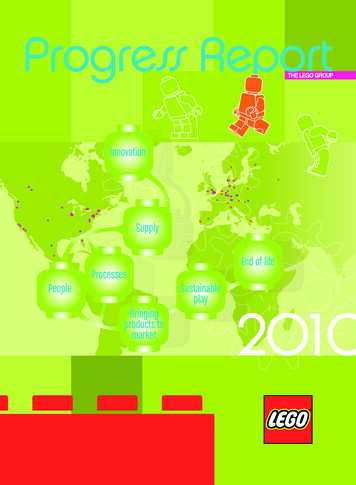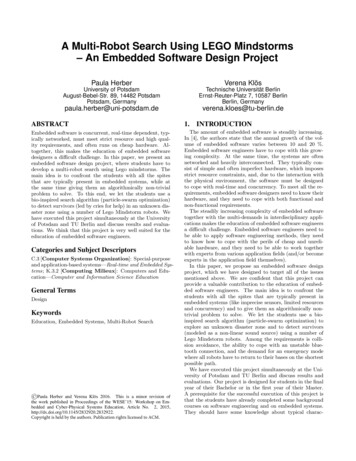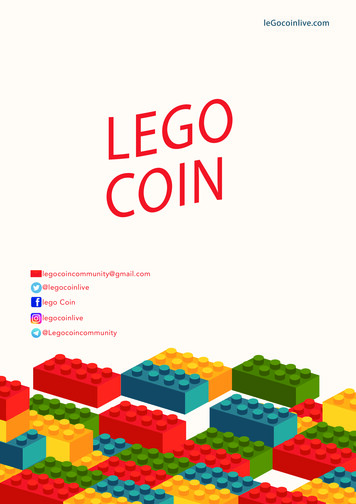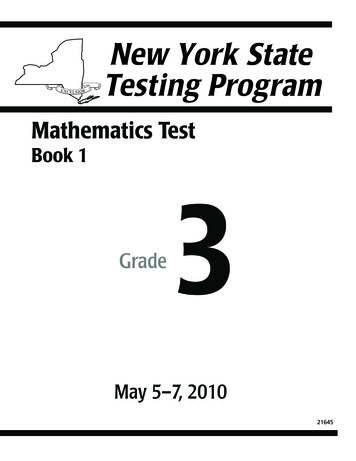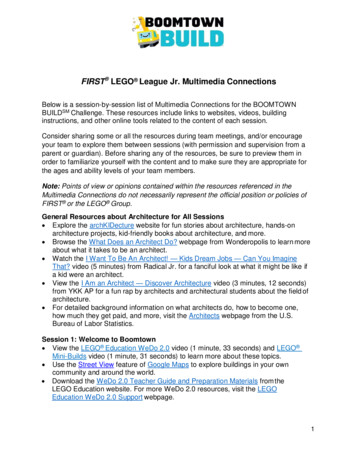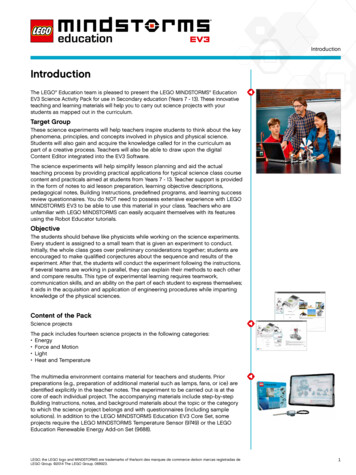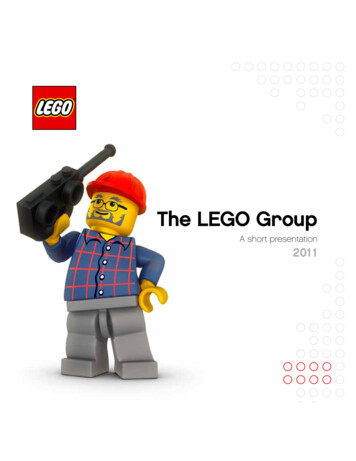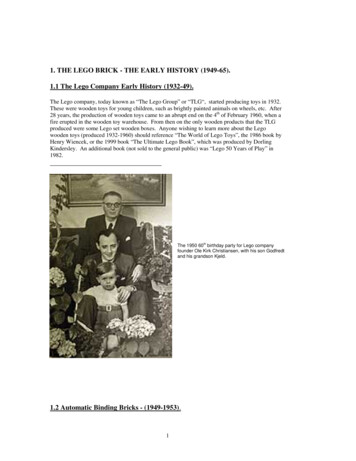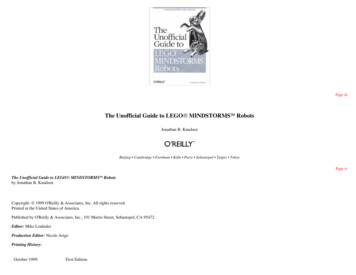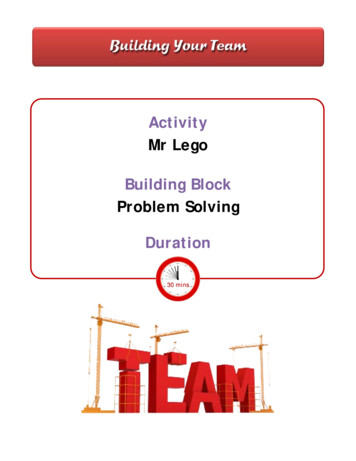
Transcription
ActivityMr LegoBuilding BlockProblem SolvingDuration30 mins
BBUUIILLDDIINNGG BBLLOOCCKKPROBLEM SOLVINGWhat Results Do We Want?At the end of this activity, team members will:Have an opportunity to work together on an assignment in order to advance their team building.Understand where their strengths and developmental areas lie as a team, specifically with respect toproblem solving.What’s the Plan?Who: At least two teams of 4 – 6 people per team are required to effectively conduct this activity.When: This activity can be incorporated into a team meeting or can form part of a team building event. Itcan add energy to a long meeting or event and can be used to solidify communication and leadershipsconcepts.Where: This activity can be facilitated in any meeting space, though it is advantageous to hold thisactivity in a room that allows for some space between teams.What’s Our Communication Strategy?Depending on the circumstances in which the activity is incorporated, communication can be in the formof an email notification and/or verbal introduction.What Resources Do We Need? Lego “men” created in advance – one per team if possible, though activity can be conducted with justone Lego man (example on last page) Enough of the right pieces of Lego for each team to re-create their assigned Mr. Lego (57 pieces if youfollow the attached suggestion on the last page) Large binder(s) or other implement(s) to obscure the view of the Lego manWhat Steps Do We Take?NoteYou’ll need to create your Lego people in advance of the activity. Place them on a table or on multipletables with a binder open in a large v-shape standing up (or other implement) to obscure the team’s viewof their Lego man. Mr. Lego is made up of 2 layers of various Lego.The AH FactorPage 1 of 4
BBUUIILLDDIINNGG BBLLOOCCKKPROBLEM SOLVINGSayIntroduce the activity as an opportunity to see how we can work together as a team to complete anactivity.InstructionsTeams will have 5 minutes to strategize, followed by 15 minutes to re-create their assigned Lego person.Only one team member from each team can view the Lego person at a time. The Lego person mustremain lying down, and no one is allowed to lift it or touch it. Please see the last page for a suggestion ofhow to create the Lego person.HandoutHand out the loose Lego pieces to each group.How Do We Connect to the Learning Objectives?Debrief this activity by asking some or all of the following of the group: What behaviours did you see demonstrated that illustrated effective teamwork?What behaviours, if any, hindered the teamwork?Was the leadership shared or did one individual dominate?Did your team have a strategy? If so, what was it?Did people freely share their ideas?What behaviours enhanced dialogue between team members?What behaviours hindered team dialogue?What roles emerged?Who initiated ideas? Were they supported? How?What roadblocks, if any, did people create?What can we learn from this about problem solving that we can apply in the workplace?Following the debrief, remind team members of the importance of discussing strategy for teamprojects, ensuring that people understand their roles, open, honest, positive feedback andcommunication.What Challenges Or Obstacles Might We Encounter?Depending on the teams, the groups may require more time to complete (or come close to completing)the activity. Some groups who are task oriented may finish within a few minutes, others require the full15 and then some). You may wish to conduct this activity when your time is flexible.How Will We Give/Receive Feedback?This will have been determined by the team during the Team Building Program Planning phase followingthe Team Assessment.The AH FactorPage 2 of 4
BBUUIILLDDIINNGG BBLLOOCCKKPROBLEM SOLVINGHow Will We Measure Our Progress?As team members will be encouraged to continue using these skills back on the job, it is a good idea tocheck in at subsequent team meetings regarding what they are noticing about their progress and how it isimpacting their relationships and their ability to work together on the team.How Will We Celebrate?While the team will have determined their method of celebration during the Team Building ProgramPlanning phase following the Team Assessment, feel free to give the group a few minutes to create a quickway to end the activity with a celebration. A team cheer or high fives all around are great ways to anchorthe learning and end the exercise.The AH FactorPage 3 of 4
BBUUIILLDDIINNGG BBLLOOCCKKPROBLEM SOLVINGThis is the top layer of Mr.Lego – the numbers indicatethe number of connectionpoints for each Lego piece(the size of the piece).This is the bottom (orunderside) layer of Mr.Lego. Note that there is a“gap” on the underside thatteams won’t be able to see.The AH FactorPage 4 of 4
Lego "men" created in advance - one per team if possible, though activity can be conducted with just one Lego man (example on last page) Enough of the right pieces of Lego for each team to re-create their assigned Mr. Lego (57 pieces if you follow the attached suggestion on the last page)
